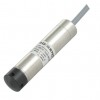Placing a sensing device in a liquid is one of the most hostile environments to ensure a long reliable service life.
The extra considerations for design engineers include:
- Keeping pressurised liquid out.
- Preventing condensation damage to the internal electronics.
- Corrosion protection for all the materials used in the transducer construction.
- Adequate protection from lightning surges in exposed installations.
There are many types of place where liquid level is measured such as Tanks, Reservoirs, Boreholes, wells, Rivers or Lakes, but the basic rules for the design of a submersible pressure transducer are the same for all of these situations.
Keeping pressurised liquid out
The insides of the pressure transducer must be kept permanently dry to a maximum specified depth. The deeper the pressure range the greater the integrity of the seals will need to be to external hydrostatic pressure. This is particular important for boreholes where there is a greater variation in depth. For shallow depth it is common to use a combination of elastomer seals to provide a liquid tight seal, but for deep applications a moulded polyurethane seal achieves a higher depth rating and a more reliable seal.
Preventing condensation damage to the internal electronics
In addition to keeping out water from inside, there is also the risk of condensation damage due to warmer air being drawn down the vent tube or between the wire cores and condensing moisture as it cools. The amount of moisture entering the internal electronics can be limited by adding filters to the end of reference vent tube to only allow dry air to pass through. The electronic compartment can be completely filled with a suitable substance which prevents any moisture making contact with sensitive components. Despite ensuring no moisture gets down the vent tube as an extra measure it is often connected directly to reverse side of the sensing diaphragm without any breaks, so that any moisture is contained within the vent tube.
Corrosion protection for all the materials used in the transducer construction
Freshwater is comparatively benign and stainless steel is adequate for most groundwater applications, but even freshwater can contain high concentrations of minerals which will be corrosive to stainless steel over time. Seawater can be very corrosive to most types of stainless steel requiring specialist metals such as Hastelloy, Super Duplex, Marine Bronze or Titanium. For chemicals there is such a variation in type in concentration that it is necessary to offer a combination of transducer construction materials like PVC, PVC-C, PVDF, Ceramics, Viton, EPDM, PTFE and PUR to cover the range of applications.
Adequate protection from lightning surges in exposed installations
In some areas thunder storms are frequent which lead to many lightning strikes throughout the year. Although it is difficult to prevent damage from a direct strike, it is possible to reduce the effect of voltage surges from nearby strikes causing damage to the electronics, by fitting surge suppression components to the electronics.
Related Help Guides
- Choosing PVC, PUR, FEP and TPE cable types
- How to reduce submersible pressure sensor failures caused by moisture ingress
- Using absolute pressure sensors to measure hydrostatic level
- Using a screw-in or waterproof pressure transmitter to measure liquid level
- Improve the electrical termination of vented submersible pressure sensors
- Considerations for monitoring Landfill Water Level
- Determining the Signal Cable Length of a Suspended Liquid Level Transducer
- Are all IP68 Water Resistant Protection Ratings the same
- Problem with zero drift when installing submersible pressure sensor

